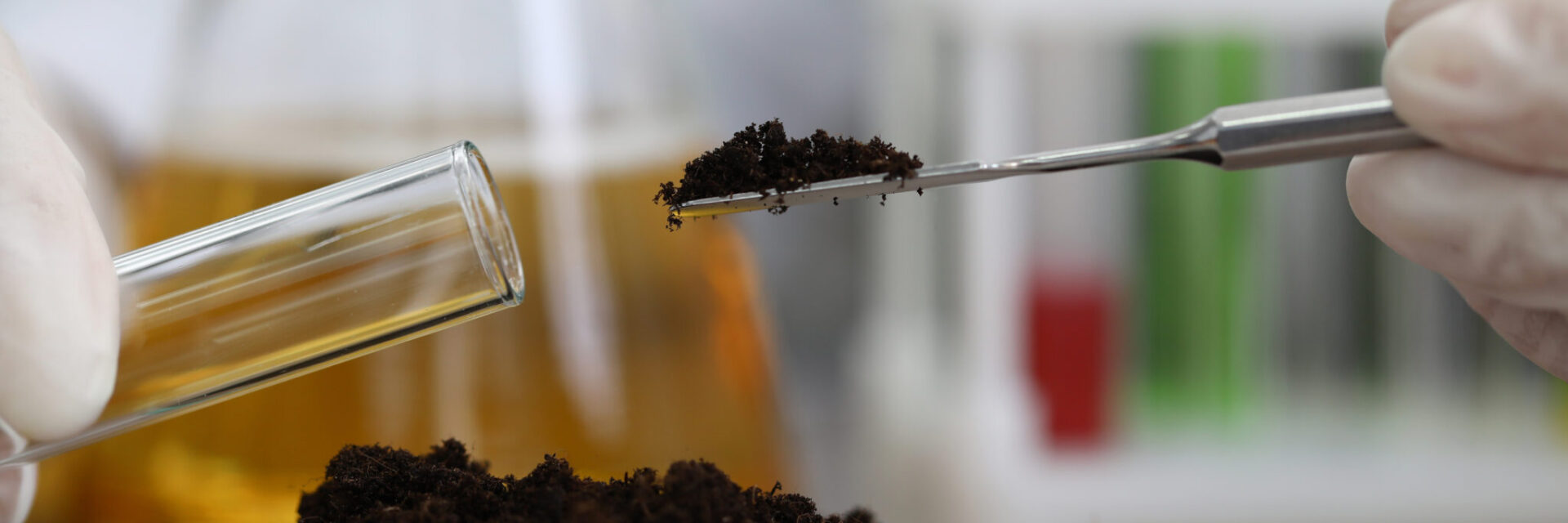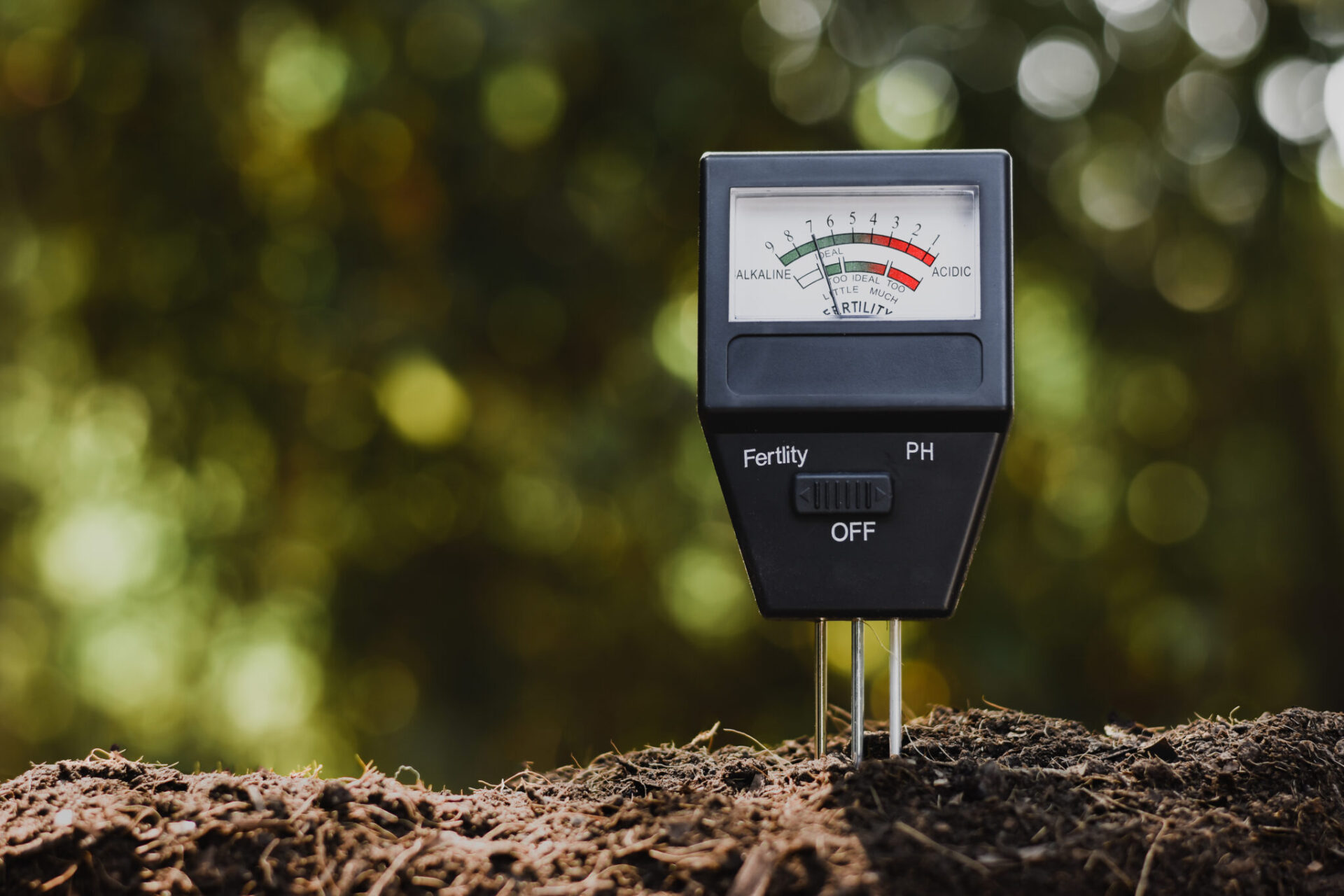The day after my 40th birthday, I realized my arms weren’t long enough to allow me to focus my eyesight for what I was reading. Unfortunately, readers are now an everyday part of my life even if I want to see the darn cell phone. As much as we as CCAs push the narrative created by a good soil test, it’s imperative that your advisor gives you the full picture. Put on your glasses and look closely. It’s easy to get fooled into thinking everything is okay with balanced numbers on the base saturation percentages (i.e., 68% calcium, 12% magnesium, 7% potassium, 2% sodium, etc.)
When we rinse the soil with acetate, we get a snapshot of the nutrient load that is on the edge of the colloid or the weathered rocks in the soil. It’s not a total number of the nutrient load in our soils, but what is “etched” of the soil at that moment. There are layers of rock and clay that have trapped nutrients to be weathered in time. The “hanging chad” nutrient clingers on the surface give us an idea of what may become available shortly. However, that number is still deceiving. It may show up when rinsed with acetate, but is not soluble at all with bad water. If you want to take this a step further, run a soil test with the actual water you’ll be using to irrigate. That’ll shock you.
Soil pH
Take a look at soil pH. While not an end-all to solving soil issues, it may be a better representation of how we can actually manipulate soil into making it more ideal. The logarithmic calculation of hydrogen gives us an idea of how much of the exchange capacity we can replace with earth metals like calcium, magnesium and potassium. The lower the pH, the more hydrogen. Higher pH means much less hydrogen is attached to the soil.
Neal Kinsey talks and writes often about the trap of thinking we can manipulate potassium numbers postharvest with slugs of dry mixes when pH is over 6.5. Unfortunately, at higher pH readings, we have less hydrogen bonded to the soil. When the water we use is high in calcium or magnesium (drought years in particular), or we have made heavy applications of amendments like gypsum, calcium overpowers the ability of potassium to stick. It has a double charge and stronger bond. We try to build these numbers in the fall, but may be just wasting our money at a time when any rain we get will just push the small amount of soluble potassium we actually receive right through the root zone. With high sulfate numbers in our soils, dry-down allows that anion to reconstitute with earth metals like calcium, magnesium and potassium. More lockup. Now what?
Organic Matter
More binding sites come from increasing organic matter. In California, using cover crops comes with the concern of using more water than we can handle to grow the non-economic crop. With the water prices we’ll be charged this year, if we can get them, we need to make every drop count just to deliver some nutrients and maintain our trees. However, think of the increase over winter that five to ten tons per acre of green manure can add to our soils. Using tubers like radishes can add even more stable organic matter while legumes can soak up atmospheric nitrogen and stabilize it in our soil. That organic matter will allow soil to hold more water in the spring and summer. With more binding sites, we can add acids to lower pH and then add cations to replace negative ions we want to leach like sodium. That’s a better picture.
Solubility
To take it a step further, look closely at the milliequivalent per liter readings coming out of the solubility section of a soil test. This is a better measure of what your roots are actually being given to drink. You can multiply the meq/l of those cations by the atomic weight of that element then divide that number by the number of electrons that specific element has. Calcium has two as well as magnesium. Sodium and potassium have only one. Now divide that number by the ppm in the base saturation. This will tell you how much of the soil constitution is actually being released in the soil solution. We can then make better decisions as to what needs to be added to our soils to feed our trees.
I am a big proponent of hitting my soils with an acid shock, following it with organic acids and then adjusting key cation ratios. I have found significant levels of success coordinating tactical applications with my growers when budgets are tight like our current markets have subjected us to.
The closer we can get our soils to ideal, the easier it will be to make “on-the-fly” adjustments to offset deficient tissues at critical agronomic stages. Getting your calcium right during cell division, potassium for heat stress, magnesium during peak chlorophyll production, etc. will greatly enhance the health of your orchard and in turn increase yields. Take your analysis to deeper levels and you will find you can do more with less. Strategically applying soluble and plant ready nutrients in season will make those bigger yields a reality, and that is something all of us want to see.

















